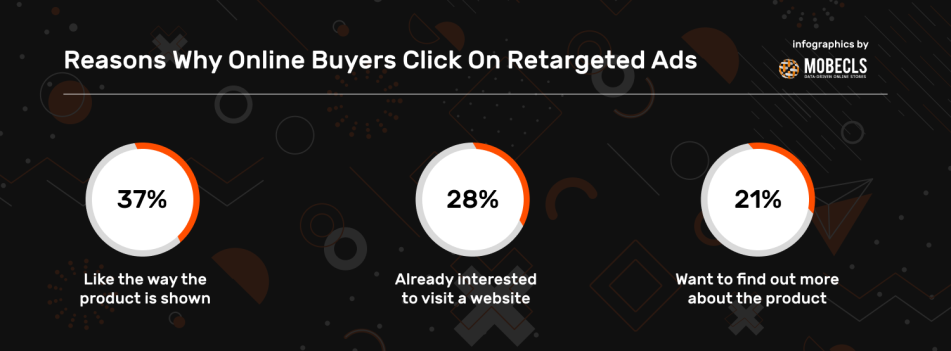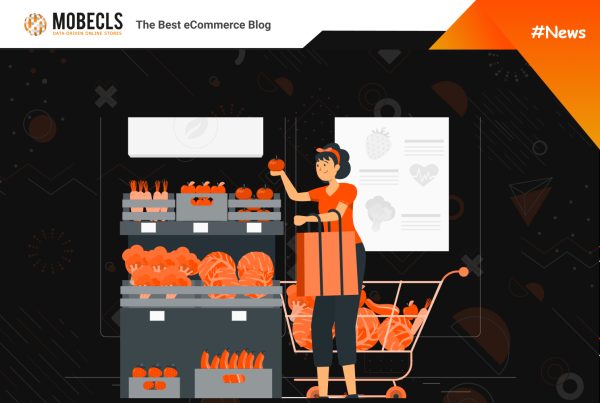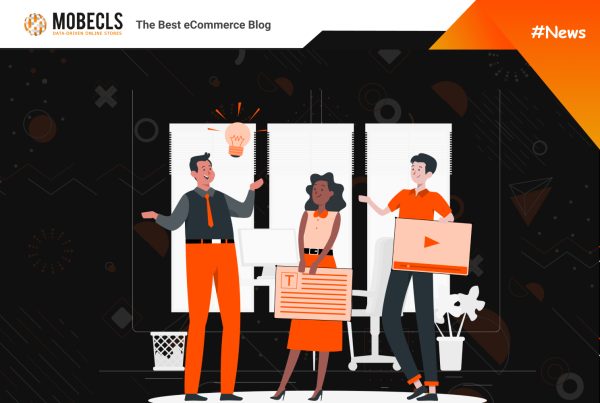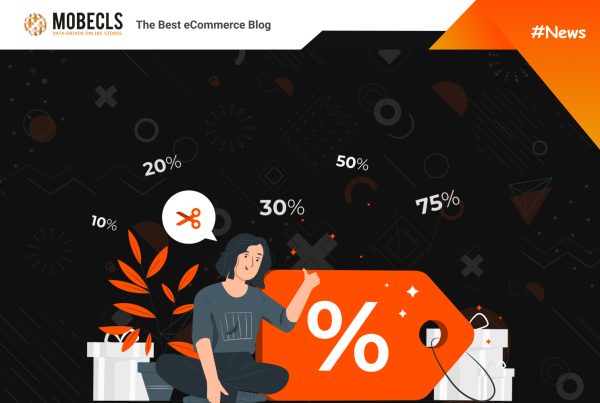In the fast-paced world of eCommerce, where competition is fierce and customer attention spans are fleeting, businesses are always on the lookout for effective strategies to enhance customer engagement and increase conversion rates. One such strategy is retargeting. Imagine having the ability to reconnect with potential customers who have shown interest in your products or services but haven’t quite made the leap to a purchase. Well, that’s where retargeting comes in. In this article, we’ll explore the concept of retargeting, differentiate it from remarketing, and delve into five powerful retargeting strategies specifically designed for eCommerce businesses.
What’s Retargeting?
Imagine you visit an online store, browse through a range of enticing products, and maybe even add a few items to your cart. Then, you get distracted, leaving the website without completing your purchase. But what if, instead of fading into oblivion, that online store could follow you across the internet, gently reminding you of those products you were interested in? That’s the magic of retargeting. It’s a digital marketing strategy that allows businesses to reconnect with individuals who have previously interacted with their website or displayed interest in their offerings. By strategically placing personalized ads across various online platforms, retargeting aims to reignite that spark of interest and encourage potential customers to revisit the website, make a purchase, or take any other desired action.
Retargeting vs Remarketing
These two terms are often used interchangeably. However, there’s a subtle difference between them. Remarketing typically involves re-engaging customers through email campaigns, sending them friendly reminders and enticing offers. On the other hand, retargeting focuses on serving personalized ads to prospects on external platforms after they leave a website. As we see these techniques have one common goal which is to motivate potential and abandoned customers to come back to your store and engage further but use different instruments to achieve it.
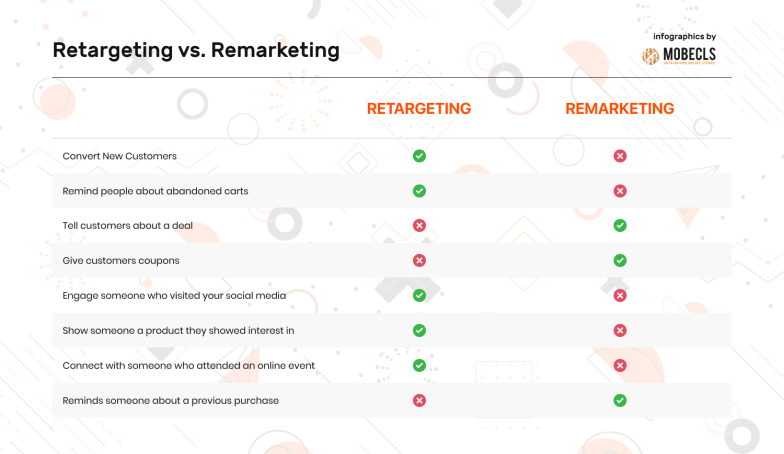
5 Retargeting Strategies for eCommerce Stores
Retargeting is an excellent tool for nurturing customer relationships throughout their buying journey. By delivering timely and relevant ads, you can provide added value, offer incentives, and encourage repeat purchases. Retargeting also presents opportunities for cross-selling and upselling, showcasing complementary products or enticing customers with upgraded options. This not only boosts customer engagement but also increases customer loyalty, brand awareness, conversion and lifetime value.
Moreover, retargeting campaigns provide valuable insights and data that empower you to refine your strategies and make informed decisions. By analyzing metrics such as click-through rates, conversion rates, and engagement levels, you gain actionable insights into the effectiveness of your retargeting efforts. This allows you to continuously optimize and tailor your campaigns for better results.
Dynamic Product Retargeting
Imagine being reminded of those stunning shoes you were eyeing on an eCommerce website, even after you’ve left the site. Dynamic product retargeting makes it happen! This strategy involves displaying personalized ads that showcase the exact products or categories you previously viewed. By reigniting your interest and reminding you of what caught your eye, this approach significantly increases the chances of conversion.
Product retargeting leverages browsing data and user behavior to create highly personalized and relevant advertisements. By displaying ads featuring the exact products they previously viewed, businesses can significantly increase the likelihood of conversion. These ads are dynamic in nature, as they dynamically pull the product information from the website’s catalog, ensuring that the displayed ads are up-to-date and accurately reflect the user’s browsing history.
By reminding users of the products they considered purchasing, you can tap into their initial desire and offer incentives or discounts to further entice them to make a buying decision.
Overall, product retargeting is a powerful strategy that capitalizes on personalized advertising and past user interactions to drive conversions. It enhances the customer experience by delivering tailored ads, reminding users of their previous interest, and ultimately guiding them back to complete their purchase journey.
Abandoned Carts Retargeting
Abandoned cart retargeting is a powerful marketing strategy employed by eCommerce businesses to re-engage potential customers who have added items to their online shopping carts but left the website without completing the purchase. It aims to remind these individuals about their abandoned carts and encourage them to return and finish their shopping journey.
This technique requires you to collect contact information of your users like emails. Having this info you can initiate a retargeting campaign by sending personalized reminders or incentives to encourage the user to revisit the site and complete their purchase.
By reminding them of the products they showed interest in and offering additional incentives, such as discounts, free shipping, or limited-time promotions, businesses aim to persuade users to reconsider their purchase and convert into paying customers.
Abandoned cart retargeting can be implemented through various channels, including email marketing, display advertising, social media ads, and even SMS messages. The chosen channel depends on your target audience and the most effective means of communication for reaching them.
Usually, it’s enough to offer a discount to motivate a customer to finish his purchase. Try out several subject lines like “Don’t Miss Out! Complete Your Purchase and Enjoy 10% Off Today”. However, it’s essential to align the subject lines with your brand’s voice and the messaging used throughout the customer journey. Personalization, urgency, and incentives are effective elements to include in subject lines to entice customers to revisit their abandoned carts and complete the purchase.
Cross-Sell and Upsell
Cross-sell and upsell retargeting are marketing strategies used by eCommerce businesses to increase average order value and drive additional sales by offering complementary or upgraded products to customers who have already made a purchase or shown interest in a particular product.
Cross-selling involves recommending related or complementary products to customers based on their previous purchases or browsing history. It aims to suggest additional items that complement the original purchase and provide enhanced value or convenience. Cross-sell retargeting utilizes customer data to deliver targeted ads or personalized recommendations that showcase products that align with the customer’s interests and preferences. For example, if a customer buys a camera, cross-selling efforts may involve showcasing camera accessories like lenses, tripods, or camera bags.
Upselling, on the other hand, focuses on persuading customers to upgrade their purchase to a higher-priced or premium version of the product they are considering or have already purchased. Upselling aims to highlight the additional features, benefits, or enhanced performance of the upgraded version to justify the higher price point. Upsell retargeting leverages customer data to identify opportunities to present customers with targeted ads or promotional offers that encourage them to upgrade their purchase. For instance, if a customer has purchased a basic streaming service subscription, upselling efforts may involve promoting a premium subscription plan with added features and benefits.
Onboarding Retargeting
Customer onboarding retargeting focuses on engaging and guiding newly acquired customers through their initial interactions with a brand. It involves delivering personalized messages, content, and offers to customers during the onboarding process.
Onboarding phase is crucial for establishing a positive relationship with new customers. It usually begins after a customer makes their first purchase or signs up for a service.
The primary objectives of this strategy are to welcome and orient customers, provide educational value, support and assistance and nurture long-term engagement. Here, you can guide customers on how to use your products or services, deliver tutorials and guides, showcase the best features of your products, etc.
Key Strategies for Customer Onboarding Retargeting:
- Segmentation and Personalization: Segment customers based on their purchase history, preferences, or demographic information to deliver personalized onboarding messages and offers. Tailor the retargeting efforts to the specific needs and interests of each customer segment.
- Multi-Channel Approach: Utilize various channels such as email, in-app messaging, social media, and display advertising to reach customers during the onboarding phase. Adapt the messaging and content for each channel to ensure consistent and relevant communication.
- Timely and Relevant Messaging: Deliver retargeting messages at appropriate intervals during the onboarding journey. Provide information and assistance when customers are most likely to need it, ensuring that the messaging is relevant and timely.
- Clear Call-to-Action (CTA): Include clear CTAs in the retargeting messages that prompt customers to take specific actions. Whether it’s guiding them to complete a setup process, explore additional features, or contact support, the CTAs should be compelling and easy to follow.
- Measurement and Optimization: Continuously monitor the performance of your customer onboarding retargeting campaigns. Analyze engagement metrics, conversion rates, and customer feedback to identify areas for improvement and optimize the onboarding experience.
Seasonal Retargeting
Seasonal retargeting is a marketing strategy that involves targeting and engaging customers with specific advertisements and promotions tailored to different seasons, holidays, or special events throughout the year. It capitalizes on the unique characteristics and consumer behaviors associated with different seasons to drive sales, increase brand visibility, and create a sense of relevance and timeliness.
How to Implement an Effective Seasonal Retargeting Strategy:
- Plan Ahead: Take time to plan and strategize your seasonal retargeting campaigns well in advance. Identify key seasons, holidays, or events relevant to your target audience and outline specific goals and tactics for each period.
- Segment Your Audience: Segment your customer base based on past purchase history, preferences, and behavior. This allows you to deliver highly targeted and relevant ads to different customer segments during specific seasons.
- Tailor Creative Content: Develop creative content, including ad copy, images, and videos, that aligns with the seasonal theme or holiday. Tailor the messaging and visuals to evoke the desired emotions and capture the spirit of the season.
- Offer Seasonal Promotions: Create compelling offers, discounts, or limited-time promotions that are specific to each season. Highlight the unique value and benefits customers can enjoy by making seasonal purchases.
- Utilize Multiple Channels: Implement a multi-channel approach to reach customers during seasonal periods. Leverage email marketing, social media advertising, search engine marketing, and display advertising to maximize your reach and engage customers across different platforms.
- Track and Analyze Results: Measure the performance of your seasonal retargeting campaigns by tracking key metrics such as click-through rates, conversion rates, and return on ad spend. Analyze the data to gain insights into the effectiveness of your strategies and make data-driven optimizations for future campaigns.
Bottom Line
Remarketing and retargeting are two closely related terms that often overlap, but they have distinct purposes. Remarketing focuses on reaching out to customers via email, while retargeting involves displaying ads to website visitors across various platforms. Both strategies can be effective in recapturing the attention of potential customers and guiding them towards completing a desired action.
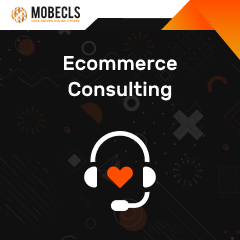 If you want to be ahead of your competitors and make sales, you need a solid online business strategy, which is vital for both eCommerce newcomers and already established businesses. If you have doubts about your eCommerce strategy or don’t have it, we’ll help you fix or create it.
If you want to be ahead of your competitors and make sales, you need a solid online business strategy, which is vital for both eCommerce newcomers and already established businesses. If you have doubts about your eCommerce strategy or don’t have it, we’ll help you fix or create it.

